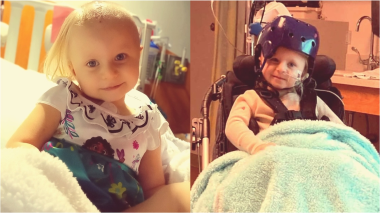In 2018, about two million Americans had an opioid use disorder. In most areas in the United States, the opioid crisis is only worsening. As it does, the number of babies born with opioid exposure is creating another crisis.
Over the past 10 years, the number of babies born with neonatal abstinence syndrome (NAS) – which occurs when babies withdraw from opioid exposure in the womb – has increased 500%. An emerging, innovative method to treat these babies has inspired optimism, however. It’s improving outcomes for babies and their moms, and it’s offering an important lesson: Sometimes the best medicine for NAS babies doesn’t look much like medicine at all.
At Atrium Health Levine Children’s Jeff Gordon Children’s Center in Concord, Levine Children’s uses the Eat Sleep Console (ESC) method to treat most newborns with NAS. The concept trades NICU stays and medications for a simpler kind of treatment – human touch.
The ESC concept emerged over the last decade, with research led by Matthew Grossman, MD, at Yale School of Medicine. Its simple treatment plan and effective outcomes caught the attention of Douglas Dodds, MD, a pediatrician at Atrium Health Levine Children’s. He initiated a series of meetings and brainstorms with other Levine Children’s providers, and they began to offer the method to a group of babies in 2016. The results demonstrated stunning success for both babies and their mothers.
“As long as you can eat, and as long as you can sleep, and as long as you can be consoled, then you’ve fulfilled the basic functions of what a newborn should be doing, and we don’t have to medicate you,” says Sara Horstmann, MD, a Levine Children’s pediatrician. “It turns a lot of what we learned as doctors on its head.”
How Eat Sleep Console works
For years, the standard of care for NAS babies involved hospital stays and medications that helped babies taper from opioid exposure. This treatment required babies and their mothers to be separated for weeks after birth.
With ESC, babies room with their mothers in an inpatient unit. Rooming together gives the mother more involvement in her child’s treatment, which increases mother-baby bonding as well. Mothers (as well as volunteer snugglers) give the babies frequent cuddling, rocking and singing.
Doctors evaluate babies based upon their ability to breastfeed or bottle feed, to sleep undisturbed and to be consoled. Mothers assist in these evaluations, creating a high-touch, mom-centric treatment.
“We almost use that snuggling and frequent holding as prescribed medical treatment,” says Dr. Horstmann. “That’s what the baby needs – it’s not that the baby needs morphine, what the baby needs is to be held and soothed to help them go through their withdrawal.”
To implement ESC, Levine Children’s uses an interdisciplinary team: representatives from the NICU, newborn nursery, behavioral health, obstetrics, developmental pediatrics, outpatient pediatrics, case management, and the local health department. All come together to support the mother and baby, even before the baby’s born and after the baby goes home. They support the mother with the skills, knowledge, and tools she needs to effectively care for her new baby.
“Families love it,” says Dr. Dodds. “They’re able to bond with their babies and learn their babies’ cues, while having us around to coach them through the tough spots.”
If a mother is unable to stay with her baby after birth, the process can occur with another caregiver, such as a grandparent, aunt or uncle. The effect remains the same. The caregiver and baby have opportunities to bond during the first few critical weeks, while having the expertise and support of healthcare providers to offer help.
Simple concept, strong outcomes
The concept is simple, but the outcomes are undeniable. Comparing ESC to the previous standard of care, the average hospital stay for NAS babies was cut in half: from 11.77 days to 5.94 days. Morphine exposure for the babies decreased by 79 percent. Costs decreased as well – almost by half.
The results weren’t just numeric. By allowing mothers and caregivers to become a vital part of babies’ treatment, stigma decreased and the quality of care improved.
The vast majority of these mothers are in active recovery, doing what’s best for themselves and their babies. Mothers dealing with opioid disorders should not decrease opioid exposure once they become pregnant; instead, they begin a maintenance therapy to prevent sudden withdrawal and to keep their child as healthy as possible before birth. Even so, feelings of shame persist. With the ESC model, mothers feel entrusted and empowered to help their children, and providers acknowledge the positive steps that these mothers have taken. This doesn’t only increase the bond between parent and child but between parent and healthcare providers.
“Once the moms let their guard down and realize you’re not there to judge them, but you’re there to support them, they can be themselves,” says Mandy Hrobak, NP, a pediatric nurse at Levine Children’s. “Then, they can ask their questions.”
Levine Children’s hopes to expand ESC to other hospitals. For now, they’re receiving referrals to the program at Jeff Gordon Children’s Center, Atrium Health Lincoln and Atrium Health Cleveland from throughout the area.
“As staff and providers have opportunity to really meet these families, they recognize that these are loving parents like the rest of us who really want to do what’s best for their child,” says Dr. Horstmann. “The compassion that we’ve seen for them has been really heartwarming, and it can change a lot of people’s minds and hearts about how we work with drug addiction and people who have a history of drug addiction.”



